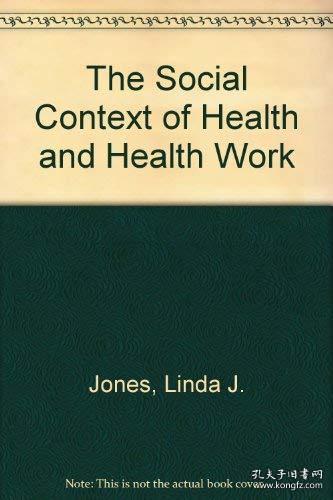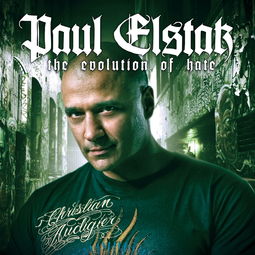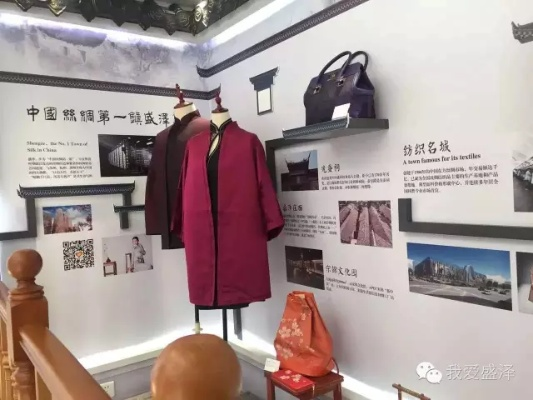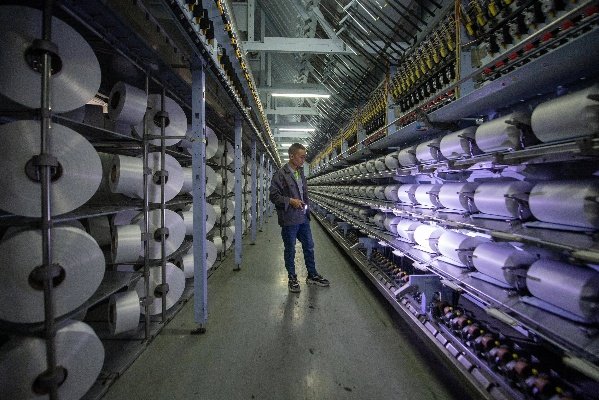Defining the Boundaries of Textiles:Industry or Sector?
The question of whether textiles are an industry or a sector is a complex one that requires a nuanced understanding of the historical and current context. Traditionally, textiles have been considered a part of the industrial sector due to their role in manufacturing, production, and distribution. However, in recent years, there has been a growing recognition of the importance of the textile industry as a cultural, social, and economic force that transcends traditional boundaries. This shift in perspective highlights the need for a more nuanced understanding of the textile industry, which should encompass not only its manufacturing and production aspects but also its broader impact on society and culture. By recognizing the multifaceted nature of the textile industry, we can better appreciate its contributions to our lives and the world around us.
Introduction: The textile industry, often considered a sector within the broader manufacturing sector, is one of the most diverse and complex industries in the world. It encompasses a wide range of activities, from raw material production to finished product manufacturing, as well as services like design, marketing, and logistics. However, when discussing the term "industry" versus "sector," it's important to understand the nuanced differences that can impact our understanding of the textile sector. In this article, we will explore the distinctions between an industry and a sector, and how these definitions relate to the textile sector.
Textile Industry vs. Textile Sector: A Comparative Analysis
An industry refers to a broad group of interrelated businesses that produce goods or services for sale or consumption. These businesses are engaged in a competitive market, producing goods or services that meet consumer demand. An industry is characterized by its size, diversity, and complexity. It includes various companies operating across different stages of the value chain, such as manufacturers, distributors, retailers, and service providers.
On the other hand, a sector is a subset of an industry that is more specialized or focused on a particular area of production or consumption. For example, the automobile industry consists of multiple sectors, including automotive manufacturing, automotive parts, and automotive services. Similarly, the textile industry has many sub-sectors, each with its unique characteristics and challenges.

In the textile industry, there are several sectors that are critical to its success:
-
Raw Materials Production: This sector involves the extraction, processing, and transportation of raw materials used in textile manufacturing. Examples include cotton, wool, silk, and synthetic fibers.
-
Manufacturing: This sector includes the production of textile products, such as clothing, carpets, and upholstery. It involves the assembly of raw materials into finished products using various techniques and technologies.
-
Retail: This sector involves the sale of textile products to consumers through retail stores, e-commerce platforms, and other distribution channels.
-
Services: This sector includes services related to textile products, such as design consultancy, marketing, and logistics.
-
Research and Development: This sector involves the development of new technologies and processes that enhance the performance and sustainability of textile products.
-
Government Regulations and Standards: This sector involves the implementation of laws, regulations, and standards that govern the production and consumption of textile products.
-
Trade: This sector involves the exchange of goods and services between countries, which plays a crucial role in the globalization of the textile industry.
-
Education and Training: This sector involves the provision of education and training programs that equip individuals with the skills and knowledge necessary to participate in the textile industry.
-
Environmental Conservation: This sector involves the adoption of sustainable practices that minimize the environmental impact of textile production and consumption.
-
Sustainability: This sector involves the pursuit of long-term economic, social, and environmental benefits through the adoption of sustainable practices in the textile industry.
Case Study: The Rise of Textile Technology Innovation
One example of how the textile industry can be considered both an industry and a sector is the development of textile technology innovation. In recent years, there has been a significant increase in research and development efforts aimed at improving the performance and sustainability of textile products. This has led to the emergence of new technologies such as smart textiles, biodegradable materials, and eco-friendly dyeing processes.
Smart textiles, for example, involve the integration of electronic devices into clothing and other textile products to provide users with real-time information about their health, fitness, and environmental impact. Biodegradable materials, on the other hand, are designed to decompose naturally without posing a threat to the environment. Eco-friendly dyeing processes use natural substances such as plant extracts instead of harmful chemicals to create vibrant colors.
These technological advancements not only improve the quality and performance of textile products but also transform the entire industry by reducing waste, minimizing energy consumption, and promoting sustainable practices. As a result, they have attracted significant investment and attention from governments, businesses, and consumers alike.
Conclusion: In conclusion, while the textile industry is often referred to as a sector within the broader manufacturing sector, it is essential to recognize its distinct characteristics as a separate industry. By understanding the nuances between an industry and a sector, we can gain a deeper appreciation for the complexities and opportunities that lie within the textile industry. As the textile industry continues to evolve and adapt to changing market conditions and technological advancements, it will be increasingly important to focus on both its industry-wide goals and its specific sector-specific challenges.

大家好!今天我们来聊聊纺织品这个话题,它既是行业也是产业,让我们一起来探讨一下这个领域的发展现状和未来趋势。
纺织品行业概述
纺织品行业是一个庞大的产业链,涵盖了从原材料采集、生产加工到成品销售的各个环节,这个行业涉及的面非常广泛,包括但不限于纺织面料、服装、家居装饰、户外用品等,纺织品行业在全球范围内的发展非常迅速,已经成为了一个重要的产业集群。
纺织品产业特点
-
技术创新:随着科技的不断发展,纺织品行业也在不断进行技术创新,从纤维材料的研发、生产设备的升级到生产过程的优化,都在不断提高纺织品的品质和性能。
-
环保意识:随着全球环保意识的不断提高,纺织品行业也在积极响应环保政策,采用环保材料和生产工艺,减少对环境的污染。
-
多元化市场需求:随着人们生活水平的提高,人们对纺织品的需求也越来越多样化,从功能性纺织品到时尚纺织品,从绿色纺织品到健康纺织品,都有大量的市场需求。
纺织品行业的发展趋势
-
智能化生产:随着人工智能技术的不断发展,纺织品行业也在向智能化生产方向发展,智能化生产可以提高生产效率、降低生产成本、提高产品质量。
-
绿色环保:随着全球环保政策的不断加强,纺织品行业也将更加注重绿色环保,纺织品行业将更加注重产品的环保性能和可持续性。
-
跨界融合:随着互联网和物联网技术的不断发展,纺织品行业也将更加跨界融合,纺织品的生产和销售将更加数字化、智能化,跨界融合也将成为未来发展的重要趋势。
案例分析:纺织品行业的发展现状
以某知名纺织品品牌为例,该品牌在纺织品的研发、生产、销售等方面都取得了非常不错的成绩,该品牌注重技术创新和环保意识,采用先进的生产工艺和设备,不断提高产品的品质和性能,该品牌也非常注重产品的多元化市场需求,推出了各种不同风格、不同功能的纺织品,满足了不同消费者的需求。
纺织品行业是一个非常重要的产业集群,它既是行业也是产业,随着科技的不断发展、环保意识的不断提高、人们生活水平的提高以及跨界融合的发展趋势,纺织品行业将迎来更加广阔的发展前景,我们也应该注重技术创新和环保意识,推动纺织品行业的可持续发展。
Articles related to the knowledge points of this article:
Sustainable Textile Recycling Solutions for a Greener Future



